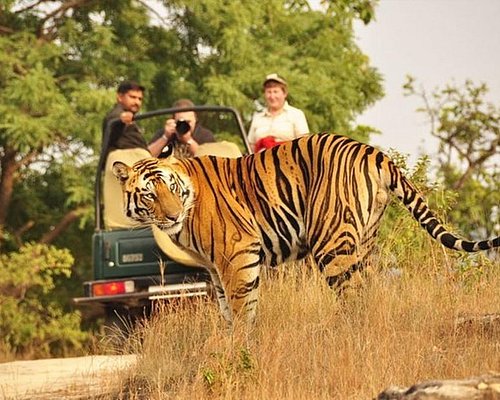
Ranthambore National Park: Where Majestic Tigers, Ancient Temples, and Natural Beauty Come Together
Welcome to Ranthambore National Park Nestled in Rajasthan’s Sawai Madhopur
Ranthambore National Park, one of India’s most renowned tiger reserves, is located in Sawai Madhopur, Rajasthan. It draws wildlife enthusiasts and nature lovers from around the world to experience its rich biodiversity. Here is some important information about the park:
Spanning 392 square kilometers, the park lies near the Sawai Madhopur and Keladevi Sanctuaries. It is considered one of the top tiger conservation areas, home to not just tigers, but also a diverse range of wildlife and over 300 species of birds.

Praesent accumsan vitae donec hac montes quisque. Praesent tristique semper orci velit hac.
Praesent accumsan vitae donec hac montes quisque. Praesent tristique semper orci velit hac.


By Air: The nearest airport is Jaipur’s Sanganer Airport, located 180 km away from Ranthambore. Direct flights to Jaipur are available from most major cities in India. From the airport, you can take a taxi to the park.
By Train: Sawai Madhopur Railway Station is the closest station to the park, just 10 km away. It is well-connected by train to major cities. From the station, you can hire a taxi to reach the park.
By Road: Ranthambore is well-connected by road. You can drive or take a bus from nearby cities. The key road distances are:
Discover the beauty, wildlife, and serenity of Ranthambore National Park on your next adventure!

Welcome to Ranthambore National Park Nestled in Rajasthan’s Sawai Madhopur

Ranthambore News In a heartbreaking incident, Ranthambore National Park has

November 10, 2025 | Admin Ranthambore is a paradise for

Explore unforgettable wilderness experiences in Ranthambore, where breathtaking nature and thrilling wildlife encounters come together perfectly.
Fill out the form below, and we will be in touch shortly.